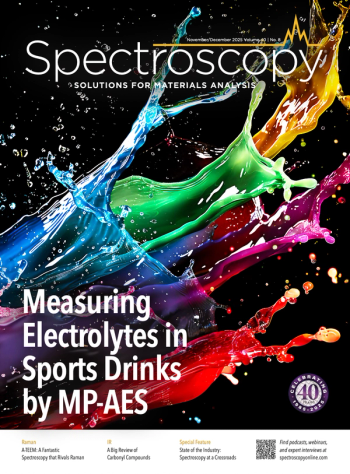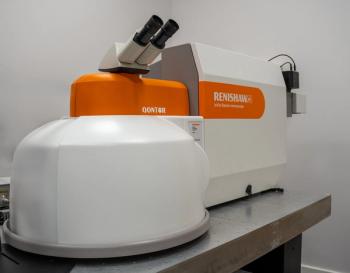
Emerging Leader Highlights Innovations in Machine Learning, Chemometrics at SciX Awards Session
Five invited speakers joined Joseph Smith, the 2024 Emerging Leader in Molecular Spectroscopy, on stage to speak about trends in hyperspectral imaging, FT-IR, surface enhanced Raman spectroscopy (SERS), and more during the conference in Raleigh.
At the SciX conference in Raleigh, North Carolina, Joseph Smith, director at Merck, received the
Smith, who has worked at Merck since 2017, focuses on developing innovative, data-driven tools for small molecules, biologics, and vaccines. He earned his bachelor’s degree in chemistry from Pennsylvania State University, where he worked on magnetic nanoparticles, and his Ph.D. in analytical chemistry from the University of Delaware, where he developed novel analytical tools for spectroscopy and hyperspectral imaging. As part of his award, Smith gave a plenary session, followed by an afternoon awards session featuring five invited speakers discussing advances in spectroscopy.
The session began with Karl Booksh from the University of Delaware, who spoke about using conformal predictions to assign confidence intervals in multivariate classification. His team applied this approach to identifying four non-steroidal anti-inflammatory drugs (NSAIDs) using hyperspectral Raman imaging. Unlike Bayesian methods that predict the probability of data fitting a model, conformal predictions estimate the probability that the model fits the data. This technique offers better insights into model accuracy and is particularly useful for classifying complex datasets.
Next, Barry Lavine of Oklahoma State University discussed infrared (IR) imaging for forensic automotive paint analysis. Traditional methods are time-consuming and can result in mixed IR spectra when layers are sampled too closely, complicating comparisons and database searches. Levine’s team used Fourier transform infrared (FT-IR) imaging microscopy to scan paint chips, collecting data from all layers in a single analysis. Using multivariate curve resolution (MCR) techniques, they successfully separated the spectra of each layer. This method improves accuracy in identifying vehicle make and model by comparing reconstructed spectra against an in-house database of original equipment manufacturer (OEM) paints.
Bhavya Sharma from the University of Tennessee, Knoxville, followed with research on using surface-enhanced Raman spectroscopy (SERS) and machine learning (ML) to monitor oxidative stress. Sharma’s work focuses on detecting the ratio of reduced glutathione (GSH) to oxidized glutathione (GSSG), a key biomarker for oxidative stress. Her team used gold-core silver-shell nanoparticles (Au@AgNPs) as a SERS substrate combined with ML models, including support vector regression (SVR), extreme gradient boosting (XGBoost), and multilayer perceptron (MLP). Dimensionality reduction with t-distributed stochastic neighbor embedding (t-SNE) helped achieve highly accurate predictions of the GSH/GSSG ratio, with R² values of 0.99.
Igor Lednev from the University of Albany then presented on Raman hyperspectroscopy and machine learning for disease diagnostics. Previous research has already demonstrated success in detecting Alzheimer’s and Duchenne Muscular Dystrophy from saliva and blood samples. His current work focuses on Sjögren’s disease, an autoimmune disorder that is difficult to diagnose due to its nonspecific symptoms. Lednev’s Raman hyperspectroscopy approach shows promise for creating a non-invasive, cost-effective diagnostic test that can distinguish between Sjögren’s patients and healthy individuals, as well as those with radiation exposure, based on distinct Raman signatures.
The final presentation was by Jean-Francois Masson from the Université de Montréal, who discussed chemometric methods for grading maple syrup. Masson’s team developed a sensor-based assay using gold nanoparticle aggregation to detect off-flavor molecules in maple syrup. Testing approximately 30,000 samples, they found the sensor responded differently to various flavor profiles. By applying an ordinal mixed effects model, they were able to predict syrup quality based on sap composition, which was linked to amino acid concentrations and other physical properties. Masson’s team also utilized chromatography and Raman scattering to further analyze the molecular content, while advanced data processing techniques, including principal component analysis and convolutional neural networks, helped classify maple syrup by transmittance, sugar concentration, and flavor profiles.
Newsletter
Get essential updates on the latest spectroscopy technologies, regulatory standards, and best practices—subscribe today to Spectroscopy.



